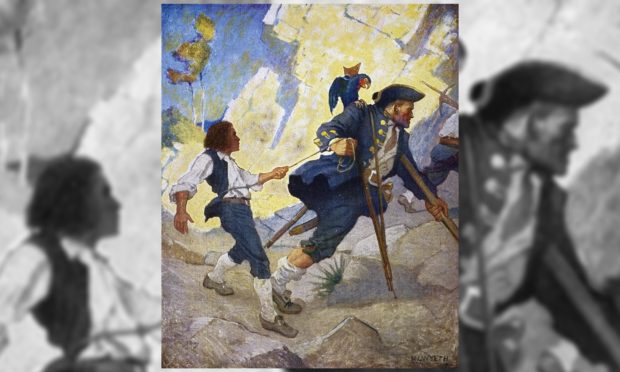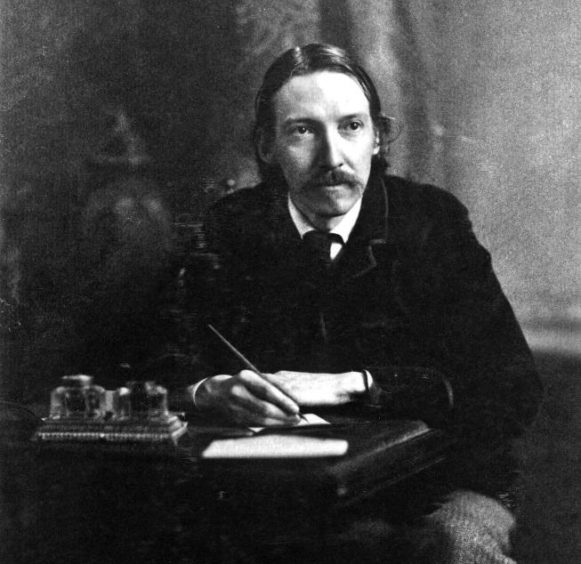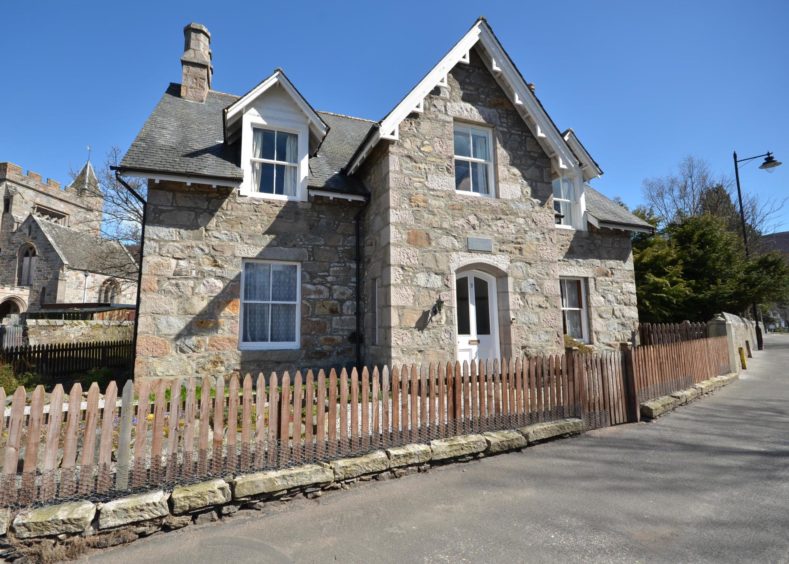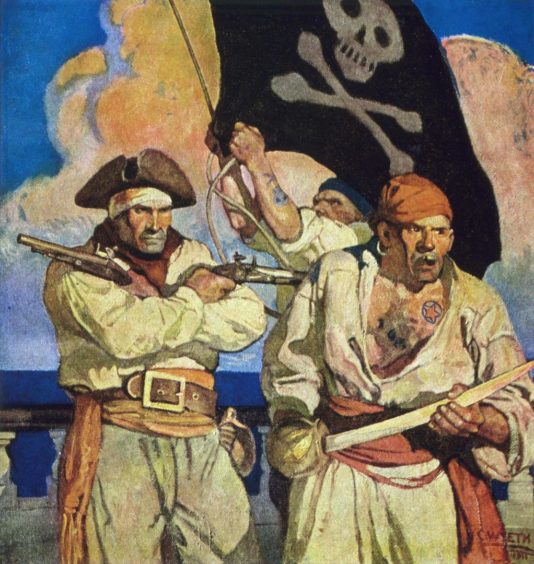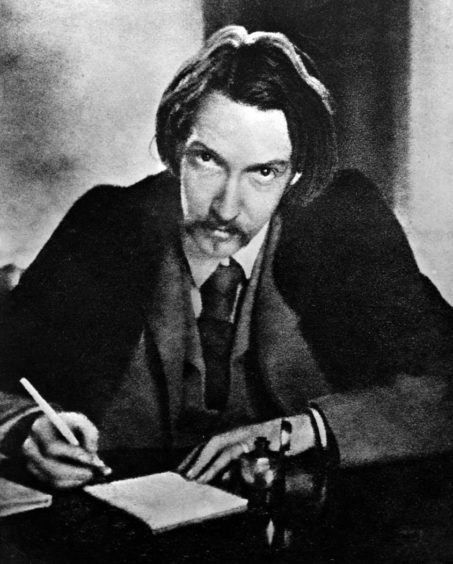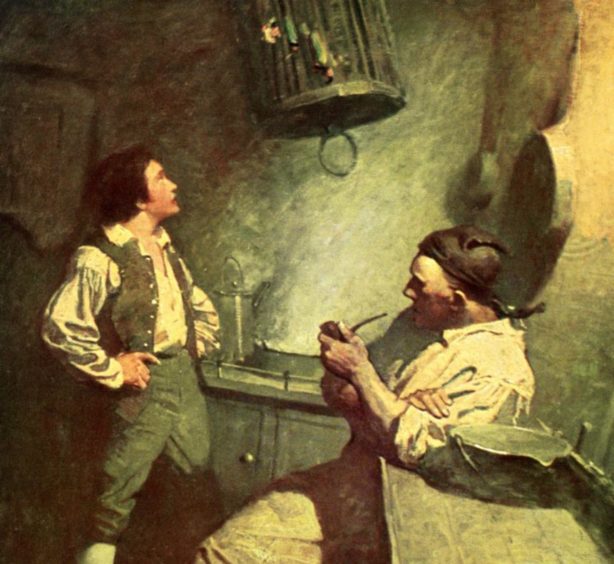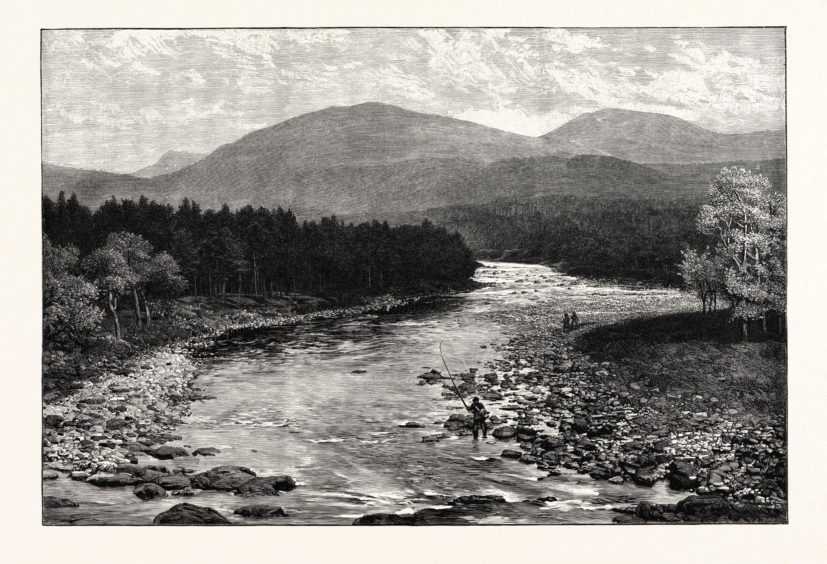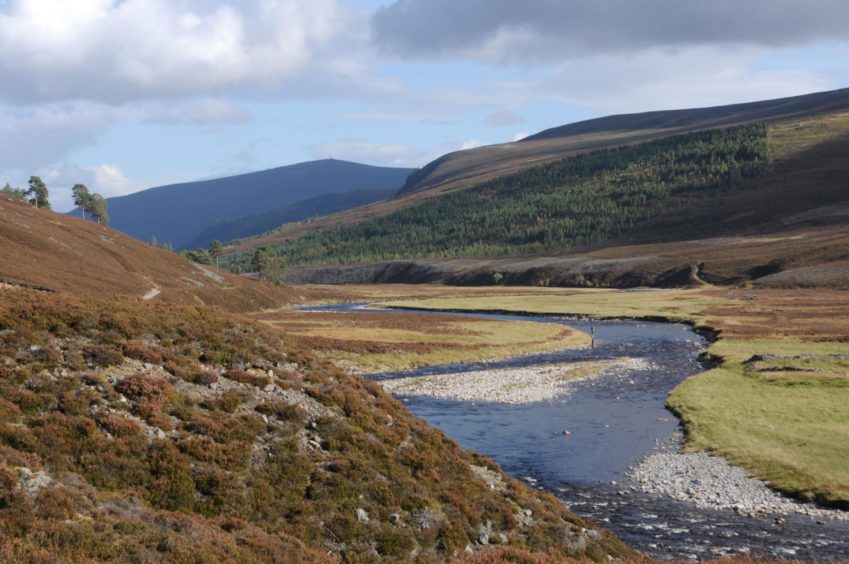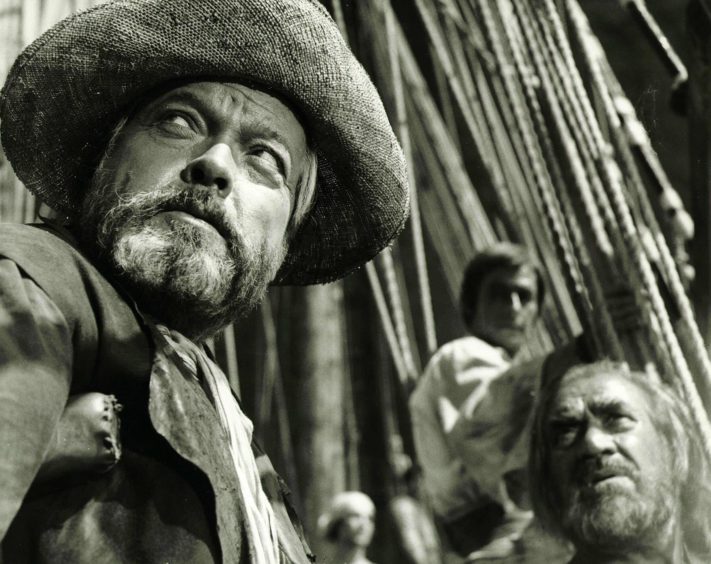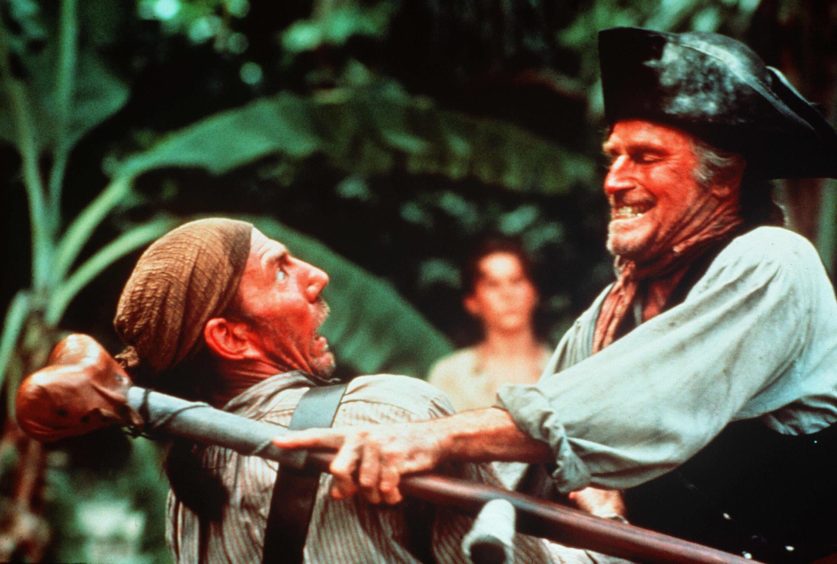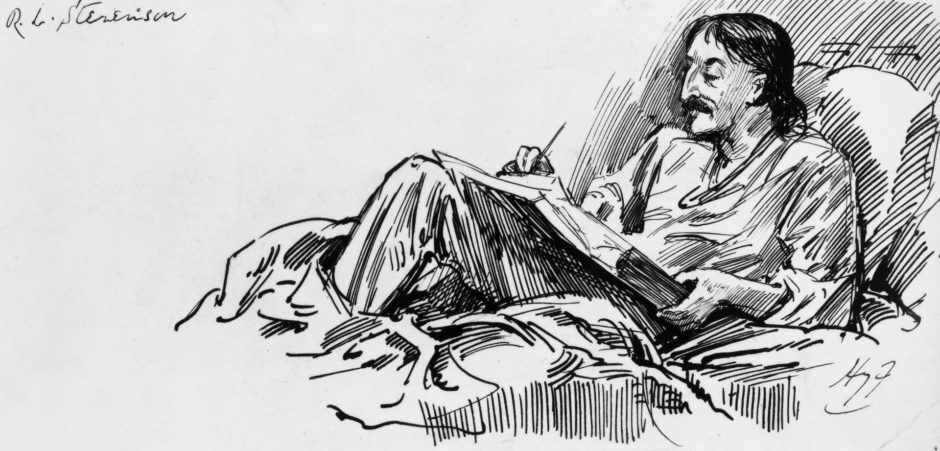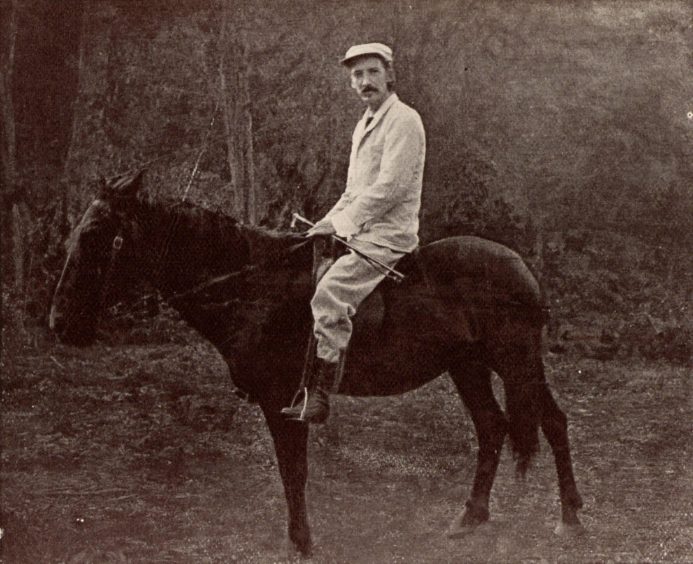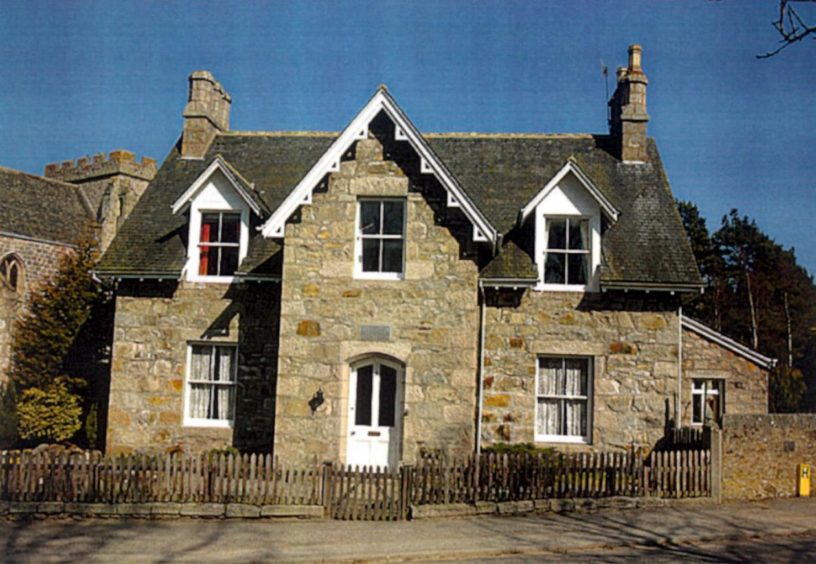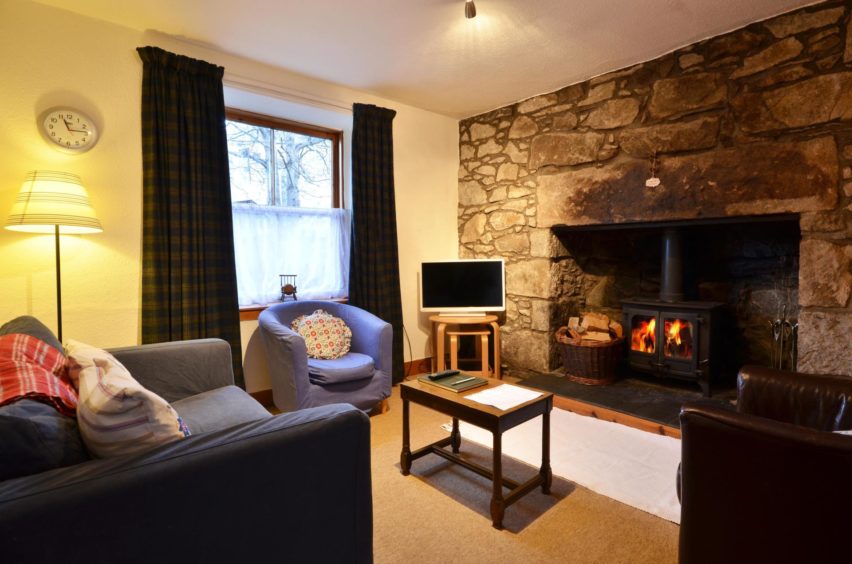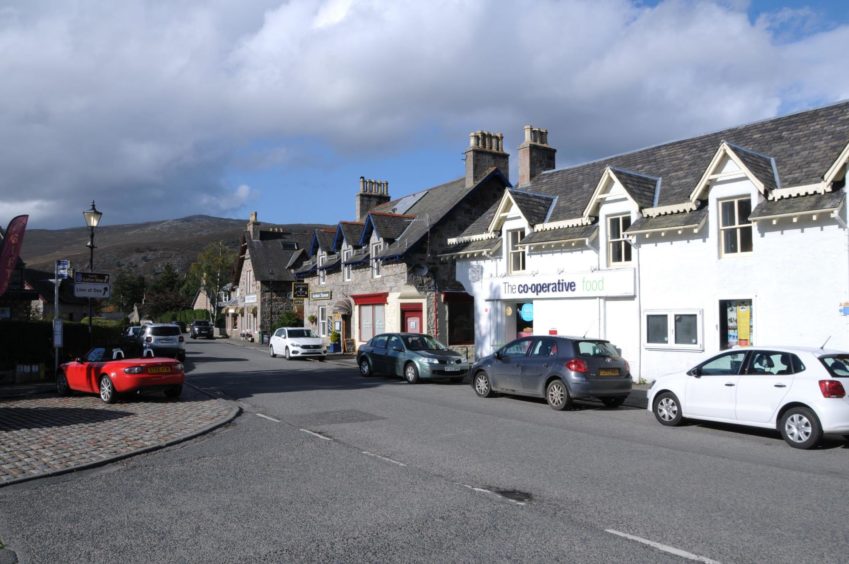Robert Louis Stevenson wrote much of Treasure Island in a cottage in Braemar. As today marks the 170th anniversary of the author’s birth, Gayle Ritchie looks at the holiday which inspired the famous yarn.
It’s a swashbuckling story of buccaneers and buried gold.
But Treasure Island was dreamed up in the Deeside village of Braemar during a particularly dreich summer.
Author Robert Louis was there on holiday and, confined inside his rented cottage as a result of the wet, cold, weather, he penned 16 chapters of the adventure novel.
It was July 1881 and the Edinburgh-born writer had just returned from his first stay in America with his new wife Fanny Osbourne.
Suffering from a chronic lung condition, the 31-year-old was keen to escape to the Scottish countryside for the sake of his health – to breathe in the clean, fresh air.
Stevenson and Fanny first stayed at Kinnaird above Pitlochry with his parents.
There, he walked on the moors and strolled along rushing burns, and thus inspired, turned out three stories – Thrawn Janet, The Merry Men and The Bodysnatcher.
He later wrote that while he loved the native air, it did not love him, and the end of this “delightful period” was “a cold, a fly-blister and a migration by Strathardle and Glenshee to Braemar”.
However, the weather failed to improve there. Rather, he said, it “blew a great deal and rained in proportion” and he passed “a good deal of time between four walls in a house lugubriously known as the late Mrs McGregor’s cottage”.
Cosy hideaway
The cottage, in the centre of Braemar, was a cosy place to hide from the elements and spend time with family.
Stevenson and his wife had brought with them 12-year-old Lloyd Osbourne, her son from a previous marriage, and they were joined by Stevenson’s father Thomas and mother Margaret.
Fed up with the weather, family members enjoyed writing stories together in short, 15-minute bursts while budding artist Lloyd would draw and paint using a “shilling box of watercolours”.
Often, Stevenson would join his stepson, in a “generous emulation”, making coloured drawings.
Together, they idly created a map of a mythical island with a shipwrecked boat and crosses to mark buried treasure.
Stevenson later mused: “It was elaborately and (I thought) beautifully coloured; the shape of it took my fancy beyond expression; it contained harbours that pleased me like sonnets; and with the unconsciousness of the predestined, I ticketed my performance ‘Treasure Island’.”
He then proclaimed he would need to “write a story all about it”.
The Sea Cook
True to his word, the following day, a chill September morning, by the cheek of a brisk fire and with rain drumming on the window, Stevenson began working on The Sea Cook – the original title.
Every day, after lunch, he read aloud his morning’s work to the family.
“My father caught fire at once with all the romance and childishness of his original nature,” he recalled.
“Fifteen days I stuck to it, and turned out 15 chapters; and then, in the early paragraphs of the 16th, ignominiously lost hold.
“My mouth was empty; there was not one word of Treasure Island in my bosom.”
Soon after, Stevenson travelled to Davos in Switzerland to spend the winter.
When he arrived, he found the rest of the novel flowed from him “like small talk” and he was able to finish with a flourish.
Stevenson later said he designed the novel to be “a story for boys” with “no need of psychology or fine writing”.
Braemar
It’s thought many characters in Treasure Island were based on people living in Braemar in the 1880s and that various locations can be linked to sites in Upper Deeside.
The 1881 census showed a family named Silver living in the village – perhaps inspiration for the one-legged pirate Long John Silver?
The address no longer exists but it’s believed to have been on the route up Morrone Hill, which boasts spectacular views of the Cairngorms.
The head of the family was a meal miller named John Silver.
The area was awash with stories of illicit stills and smuggling – could that have inspired Stevenson’s rip-roaring pirate story?
And then of course there were tales galore of clan fighting and rebellion.
Indeed, the Earl of Mar raised the Jacobite standard to launch the Old Pretender’s Rebellion of 1715 on the site of Braemar’s Invercauld Arms.
Shortly before Stevenson began his summer holiday, local author John Grant brought out the book, Legends of the Braes of Mar, which referred in glorious detail to brigands, vagabonds, rebels, castles, hidden loot, and tall tales.
Perhaps the fellow writers chin-wagged over a dram or two?
Other Braemar locals recall an old lady who had a parrot in the 1920s.
It’s possible the parrot was around in the 1880s and could have been the inspiration behind Long John Silver’s parrot, Captain Flint.
Aboyne, Upper Deeside and Donside councillor Geva Blackett said Stevenson headed to Braemar for the summer because he thought the air might do him good “but apparently it was rather damp”.
“Even when it’s damp Braemar is beautiful so who can blame him for being inspired by the village and surrounding countryside!” she added.
“But yes, Long John Silver was based on a miller called John Silver who lived up Chapel Brae.”
Greatest sea story
Treasure Island was originally serialised in the children’s magazine Young Folks from 1881 to 1882.
It was first published as a book on November 14 1883, by Cassell & Co.
It’s been heralded as one of the greatest ever sea stories and is of such literary merit that it has been studied in many schools as part of the curriculum.
Many film adaptations have been made of the novel.
It was Walt Disney’s first live action feature film in 1950, starring Bobby Driscoll as Jim Hawkins and Robert Newton as Long John Silver.
In 1990, a made-for-TV film version of Treasure Island featured Charlton Heston, Christian Bale, Oliver Reed and Christopher Lee.
Life and letters
Born in Edinburgh on November 13 1850 – 170 years ago today – Stevenson is one of the world’s greatest writers.
He is best known for Treasure Island, Kidnapped, Strange Case of Dr Jekyll and Mr Hyde, and A Child’s Garden of Verses.
Stevenson suffered from serious bronchial trouble for much of his life, but continued to write prolifically and travel widely in defiance of his poor health.
As a young man, he mixed in London literary circles, receiving encouragement from Andrew Lang, Edmund Gosse, Leslie Stephen and William Ernest Henley.
Stevenson also developed a warm friendship with Kirriemuir-born Peter Pan creator JM Barrie.
Although the writers never met, they engaged in a long-distance exchange of letters between Britain and the Pacific Islands, and left behind a treasure trove of playful and poignant missives.
In 1890, Stevenson settled in Samoa where, alarmed at European and American encroachment upon the South Sea islands, his writing turned away from romance and adventure toward a darker realism.
He died in his island home in 1894.
The cottage
Treasure Island Cottage is available for rent via Unique Cottages, unique-cottages.co.uk.
The website describes the property as “a ‘compact and bijou’ traditional stone cottage situated quietly in a side lane near the centre of Braemar”.
The listing states: “The cottage’s name is not a fanciful invention. It is in fact the very cottage in which Robert Louis Stevenson wrote some of his famous book when he lived there in 1881!
“One can’t help speculating where in the cottage Stevenson would have worked on his novel.
“Could you actually be sitting in the same room where he devised his masterpiece?
“Certainly he would have found the cottage sitting room a congenial place, though it is doubtful whether it would have been as comfortable then as it is now.”
The cottage is currently undergoing extensive renovation work.
A spokeswoman hinted it would be available to rent in 2021 at the earliest.
“Unique Cottages have enjoyed having this charming cottage with its impressive literary connections on our portfolio over the past few years,” she said.
“We can’t wait to see its smart new look following its renovation that our guests are sure to adore.”
